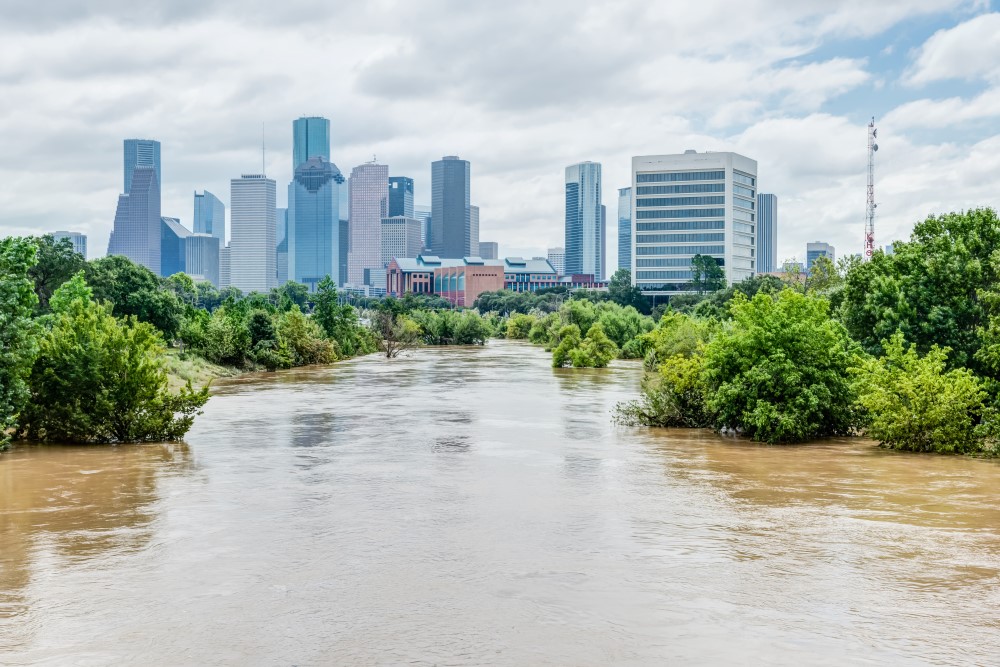A snapshot of the physical climate risk facing 1,000 of the world’s assets

Climate literacy is one of the key pillars of this year’s Earth Day campaign, an annual event held every 22 April to raise awareness of the need to protect the environment. The climate literacy campaign promotes education on climate change, its causes and impacts, and has a significant part to play in developing responsible citizens, informed and motivated to act in the best interests of the planet. Climate literacy will equip future generations with the knowledge and skills they need to develop solutions for a green economy.
To demonstrate the impacts of climate hazards such as extreme heat, wind, drought and wildfire, we have used our climate intelligence product, EarthScan to screen 1,000 built assets across Europe and the U.S. to assess their climate risk over the next few decades. The assets vary in type, including factories, offices and power plants, and are owned or operated by leading manufacturing, real estate, and pharma companies.
Key findings of the 1,000 asset portfolio
After uploading a .csv file the assets to EarthScan, we discovered that heat stress, and precipitation risk are the highest risk categories across the portfolio under a business as usual scenario.
71% of assets are exposed to a material level of heat stress in 2025, increasing through time and reaching 100% by 2100
46% of assets are at material risk of precipitation in 2025, increasing through time and reaching 86% by 2100
View the in-depth portfolio findings here
EarthScan assigns every asset with a Cervest Rating™, both for individual hazards and overall risk, ranging from A (very low climate risk) to F (very high climate risk). Ratings above a C are considered to be at material risk in line with guidance from the Task Force for Climate-Related Financial Disclosure (TCFD).

Fig. 1 The insight from EarthScan, focused on the most prominent climate hazards across the portfolio in present day (2025) and over time through to the end of the century (2100) under a Business As Usual (BAU) climate emissions scenario.
For those who own, manage or rely on the affected assets, this insight is critical for making climate-informed decisions to build robust adaptation plans. Heat stress and precipitation can cause extensive damage to buildings, resulting in expensive repairs, reputational damage if they cannot continue to provide their services and loss of faith from stakeholders.
In addition to this overall view of risk at the portfolio scale, EarthScan allows us to dig deeper into the results to discover the main countries impacted by different climate hazards, and how these risks will develop over time. Heat stress, for example, will affect all countries, but especially Puerto Rico and Italy. Precipitation risk will have a particular impact on the U.S. and the UK over the next few decades.
We can also go one level further and look at the risks facing individual assets. The specific climate hazard likely to affect an asset, and the severity of the risk, allows for those who own or manage these buildings to make specific plans to protect their investment. From retrofitting buildings with flood defenses or improved irrigation, to relocation of particularly important services to safer locations, decision makers must be fully informed in order to make informed decisions to protect their bottom lines. This can only be done with access to science-backed, asset-level and comparable climate intelligence.
Why do businesses need to become climate literate?
Earth Day focusing on climate literacy demonstrates that the world is starting to move beyond just thinking about the race to Net Zero, and is also starting to focus on physical climate risk. Climate literacy is a growing requirement for businesses, driven by accelerating and costly climate events, increasing stakeholder pressure to include climate risks in reporting, and regulatory requirements to disclose their climate-related financial risk.
Climate disclosure in line with the TCFD recommendations is already compulsory for a growing number of companies in a growing number of countries including the UK and Switzerland, and the SEC has put forward a proposal to implement similar regulations in the U.S. Across Europe, companies are also subject to new EU Taxonomy rules which will increase in scope over time. Adding climate intelligence to their capabilities means organizations can start building up greater climate literacy, and understand how its network interacts with climate change.
“Climate intelligence provides the new climate literacy every decision-maker needs to plan, build and protect our most valuable assets. Cervest helps organizations, businesses and governments to factor climate risk into key decisions and meet climate-related financial disclosure deadlines.”
Low climate literacy was also highlighted as one of the key barriers to adaptation in the latest IPCC AR6 Synthesis Report. As the impacts of an increasingly volatile climate make clear, we must urgently focus on ensuring the resilience of the built assets and infrastructure that we rely on. Physical climate-related risks will impact every built asset everywhere. Understanding how to adapt with climate change is the key to protecting lives, livelihoods and economies.
Cervest climate intelligence offers an asset-centric perspective view of risk that is highly personalized and actionable. EarthScan’s science-backed and standardized Cervest Ratings allow ESG, sustainability and risk management leaders, asset managers and other stakeholders to compare assets and portfolios, prioritize areas most at risk, and use globally comparable Cervest Ratings to benchmark assets and portfolios.
Download our ebook to discover what actions your company can take once they have a clear understanding of the climate risks facing its assets.
Share this article
Our latest news and insights

Accenture and Cervest collaborate to bring innovative solutions to clients seeking resilience amid increased climate risk
Read more
What is climate intelligence and why do businesses and governments need it?
Read more